We get to sleep in today as we decided to take a guided walking tour of the wharf district known as Bryggen. It does not start until 1100 so we are in no rush today. Having a day like this every once in a while is a very good thing on a long journey like ours. We enjoy a nice breakfast at our new hotel. They have scrambled eggs, fried eggs, potatoes, and little weenies. The last place had beans but no weenies,,this is the opposite. We pass on the little hot dogs. They also have loks, smoked mackerel, some whitefish, cold cuts, and the other usual assortment. It is very nice.
We walk a big U Turn around the harbor to the old section of town and buy our tickets at the museum for the walking tour. We get to poke around a bit before the tour starts. They have a collection of rune sticks that were uncovered here. Rune sticks were used by the merchants to track merchandise and also were used just as learning tools for the alphabet and for notes, etc.
They are made of wood and use the runic alphabet. The mark for our initials, c and z is the same. We also see the foundations of the original town. The spot we are standing on used to be the waterfront and these buildings dating from 1100 were front and center. Bergen had two large fires in the 1100s and they pushed the debris into the water and built on the now new waterfront. Over the centuries, there were several fires which destroyed the town and each time they used the debris landfills to move the waterfront further out. The current waterfront is about 500-600 feet further than the original settlement.
We meet our guide and start the tour. He explains some of the history which I just told you and also shows us several displays in the museum. He tells us how the hanseatic league ( remember them from Estonia and Latvia) with the Kings cooperation, controlled the trade in the waterfront area. Dried cod and fish oil (used for lamps, not in pills) were the main hot commodities.
We see displays of items found in the excavated debris such as old ice skates, cooking utensils, game boards, and many combs. The combs were not used to make oneself look pretty, but rather as a way of getting lice and other critters out of your hair.
From the museum, we walk into one of the hanseatic halls. After a few fires, it was forbade to have fires in your own home. Instead, they built communal areas for meeting, playing, games, eating, etc. this way someone was always around watching the fire. There were also communal kitchens for cooking. The last great fire was in 1708 and most of the remaining wood buildings date from after that time. Because they were built on debris which is still rotting, several buildings are sinking or shifting creating an uneven facade. When they tore down part of the old buildings in the early 1900s and later, it was discovered that in putting new buildings up, it caused even more problems with the old foundations. Now, any new building or even renovations near this area is strictly controlled and studied before work can begin.
We move on to the hanseatic museum. The story behind this museum is that in the 1900’s, the wharf area was in disrepair. Rotting foundations, old stinky fish warehouses, and other problems made the people want to tear it all down and start over. Construction entrepreneurs were able to procure a large number of harbor front homes to develop. There was one guy that liked the history and refused to sell. People then did not like him for it, now they herald him for his vision as his home is the only remaining hanseatic home on the waterfront and now is a museum. We see the merchants office and business center on the main floor. Upstairs are rooms which include a bed for the journeyman ( his own small room ), and the room for four apprentices, and the owners room.
Some beds are like closets, which we assume was to keep the heat in at night when you slept. Remember, no fires were allowed in the homes. One door to the bed has an old fashioned pin up girl painted on it. At least that is what I make of it.
After the tour ends we are free to peruse the different places we went on our own. We stroll the town and walk up to a viewpoint above the old fortress. From there, we walk back around the harbor and decide to eat an early dinner. It is about 4:00 and we go back to Zupperia. Why mess with some place different when we enjoyed both the ambience and the food yesterday. We both get the Norwegian salmon tonight, which Carol claims is the best salmon she has ever had. After dinner we buy a local pastry called Schillingsboller and share it back at the hotel with some coffee. It is kind of like a flat cinnamon roll but not nearly as good. You have to try.
We relax and look up liquor stores because we would like to try Akiviitt, a liquor that Terje told us about on our cruise. Norway is like Utah,with all liquor stores owned by the country. Only beer is sold in the grocery stores. We find one on line that is nearby, but unfortunately it closes at 6:00 and it is 5:50 so our Akiviitt will have to wait. The closing time seems to be the norm for the liquor stores. Apparently, the Norwegians do not drink after 1800, or perhaps they are better planners than Americans.
Our daughter, Laura calls us on face time, and we have a nice chat for about an hour. We miss her and she is doing well. Face time is a wonderful thing and we get to see her smiling face even though apparently our picture on her end is fuzzy. Could be that I need to shave. Anyway, it is early to bed as tomorrow we have ferry tickets at 0800.
Expenses
Walking Tour of Bryggen 240 NOK
Dinner at Zupperia 420 NOK
Schillingsboller Pastry 21 NOK
Hotel Hordaheimen 879.75 NOK
Walked 6 Miles
- Bergen Police
- Rune Sticks
- Original Town Foundations
- Old Ice Skate
- Carol’s Kitchen
- Dried Cod
- King Cod
- Appprentice Beds
- No Words
- Leaning Building
- Bryggen Wharf Area
- Communal Room
- Fill It Please
- Big Beer or Wine or ??
- Norwegian Curmudgeon
- Get Out of My Kitchen
- St. Mary’s Church
- Dinner Tonight


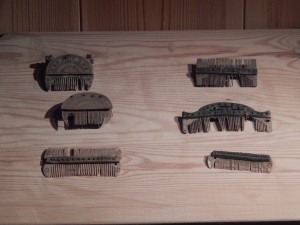

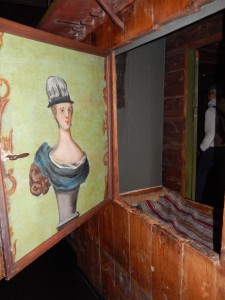

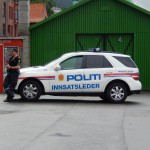

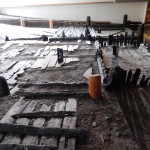
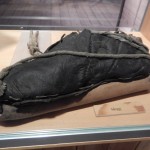
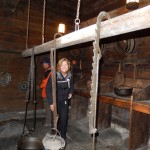
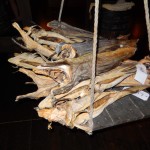
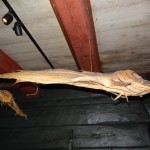
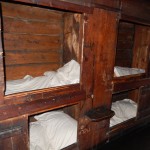
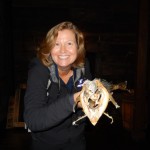
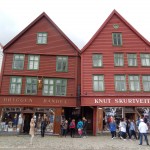
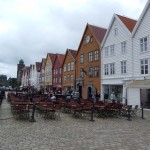

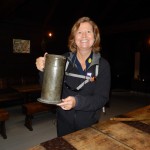
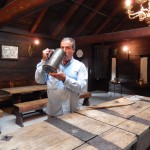
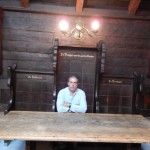
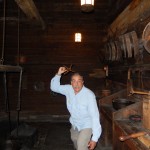

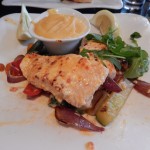
Thanks for the Po Po Car pic